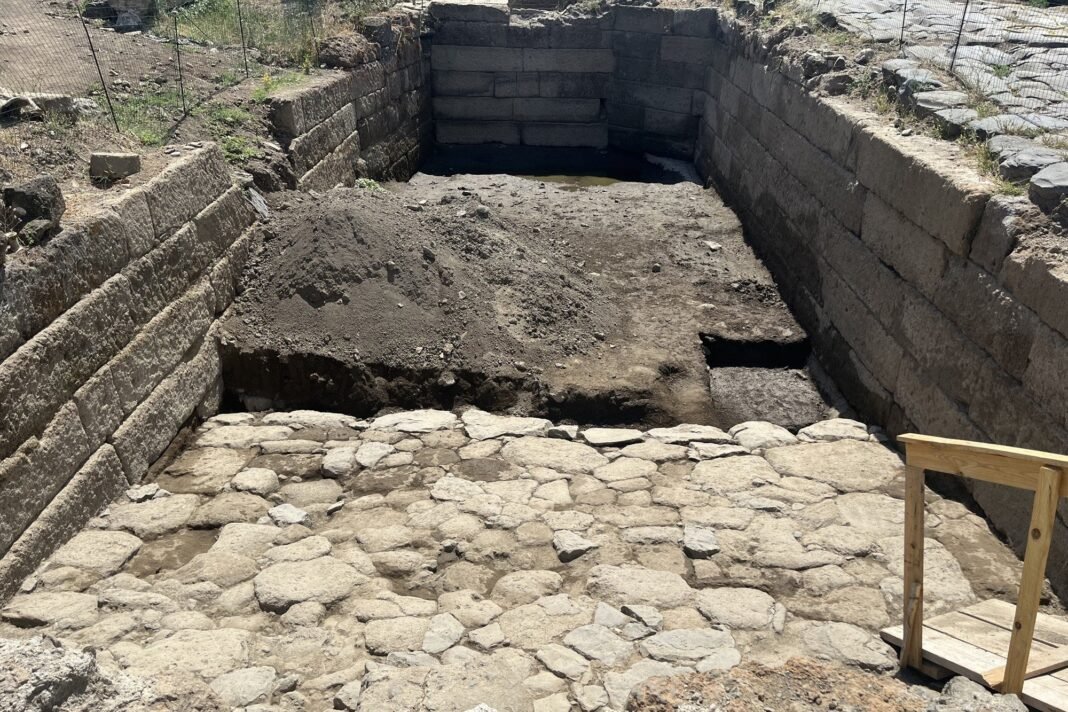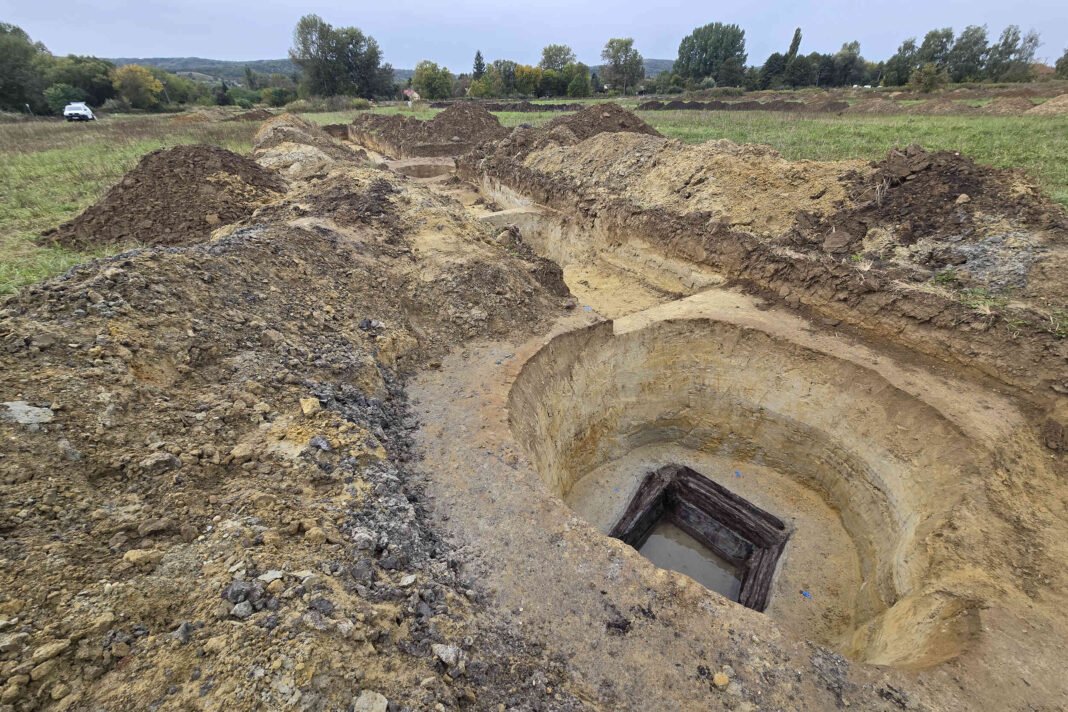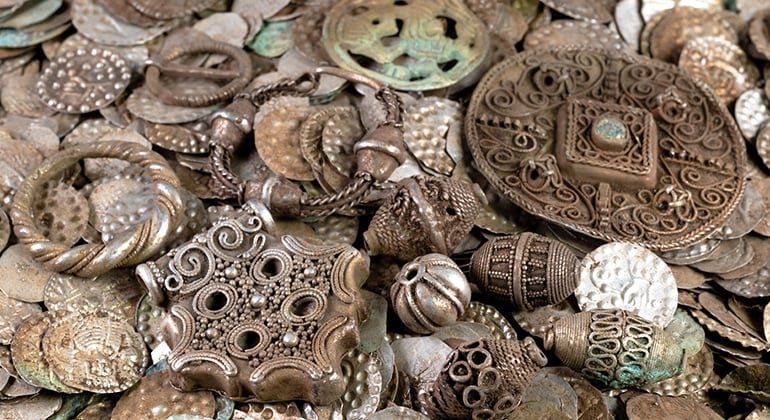
Archaeologists in Italy have uncovered a massive stone-lined basin in the ancient city of Gabii, about 11 miles east of Rome, revealing one of the earliest examples of large-scale Roman architecture.
The discovery, led by Marcello Mogetta, chair of the University of Missouri’s Department of Classics, Archaeology, and Religion, suggests that the origins of monumental Roman building began far earlier than previously believed.
The man-made basin, partly carved into solid bedrock, dates to around 250 B.C., though parts of it may be older. Researchers say the structure stands among the earliest known examples of Roman monumental construction outside of temples and city walls.
It offers new insight into how early Romans experimented with grand architectural forms centuries before the rise of the empire.
Architecture as political expression
Mogetta said the discovery highlights how early architecture in Rome was tied not only to practicality but also to political expression. “This discovery gives us a rare look at how the early Romans experimented with city planning,” he said.

The basin’s location at the city’s center, near a major crossroads, suggests it may have been part of Gabii’s forum — the civic heart of Roman public life. Since the earliest layout of the Roman Forum in the capital remains uncertain, the site at Gabii offers a valuable insight into the evolution of urban design in early Roman towns.
Greek inspiration in early Roman design
The discovery builds on earlier findings at the site, including the “Area F Building,” a terraced complex cut into the slope of an ancient volcanic crater. Together, these structures show how early Roman builders were influenced by Greek architecture.
From the Parthenon to the Agora, Greek architects used plazas, terraces, and open public spaces to symbolize civic pride and power. Romans, researchers say, adopted and reinterpreted those ideas as they developed their own monumental style.
A city frozen in time
Gabii occupies a distinctive place in Roman history. Once a powerful neighbor and rival of Rome, it was first settled in the Early Iron Age. The city was largely abandoned by 50 B.C. and later reoccupied on a smaller scale.

“While Rome’s earliest layers were buried beneath centuries of later construction, Gabii — a once-powerful neighbor and rival of Rome, first settled in the Early Iron Age — was largely abandoned by 50 B.C. and later reoccupied on a much smaller scale,” Mogetta said. “They offer “a rare glimpse into early Roman life.”
Preserving and expanding the excavation
Recognizing its significance, Italy’s Ministry of Culture designated Gabii as an archaeological park, now part of the Musei e Parchi Archeologici di Praeneste e Gabii. This has allowed the international Gabii Project — which Mogetta now directs — to expand research and preservation efforts.
Next summer, with support from Italy’s General Directorate of Museums, archaeologists will continue excavating inside and around the basin, including a nearby stone-paved area that may have been part of Gabii’s civic center. Researchers also plan to study a mysterious underground “anomaly” revealed through thermal imaging, which may be a temple or another major public structure.
Clues to the origins of Roman public life
“If it’s a temple, it could help us explain some of the artifacts we’ve already found in the abandonment levels of the basin,” Mogetta said. These include “intact vessels, lamps, perfume containers and cups inscribed with unusual markings.”
Some of the objects, he added, may have been placed as ritual offerings during the pool’s closure around 50 C.E., reflecting the deep link between water, religion, and public life in ancient cities.
As excavations continue, one question remains central: did civic spaces emerge before religious centers, or the other way around? What researchers uncover in Gabii could help trace how politics and worship shaped the earliest monumental landscapes of Rome — and the architectural traditions that later defined the empire.


